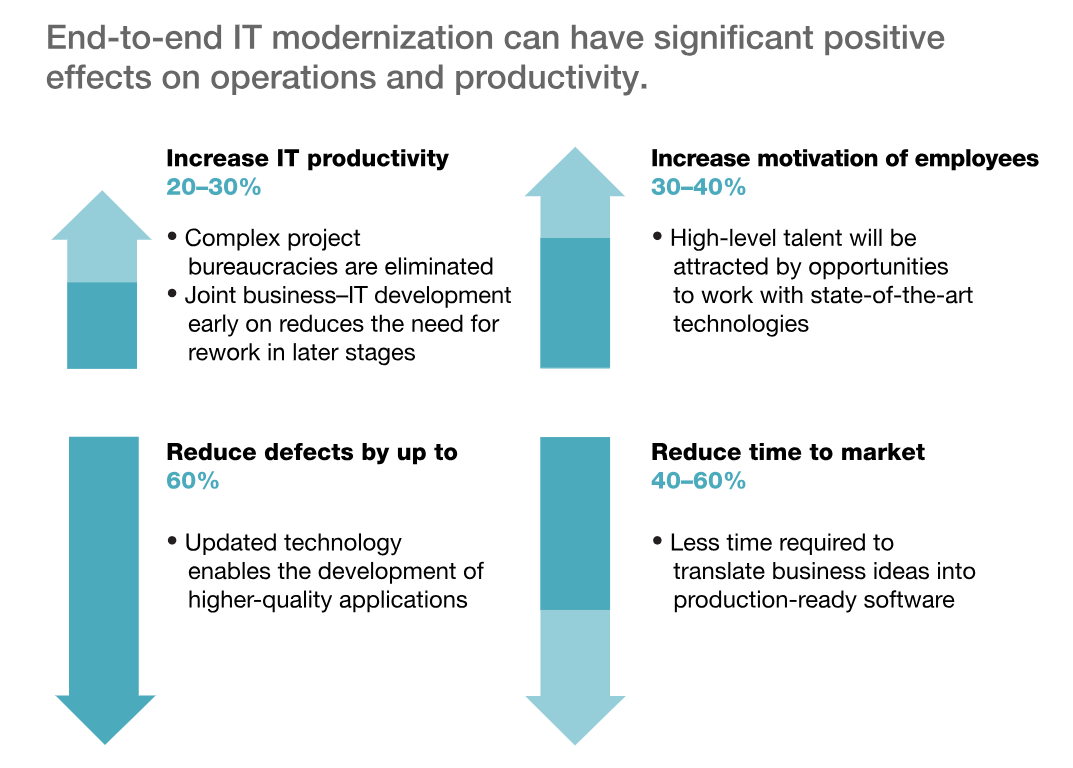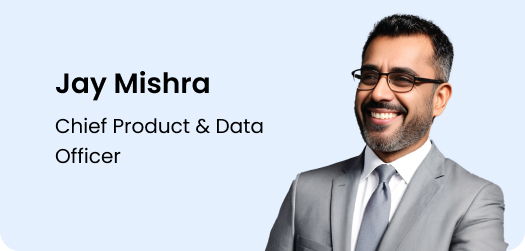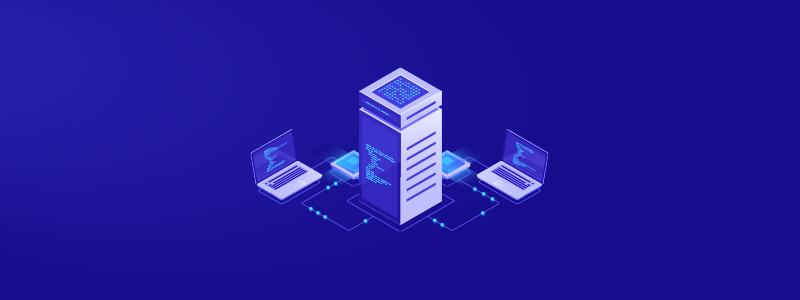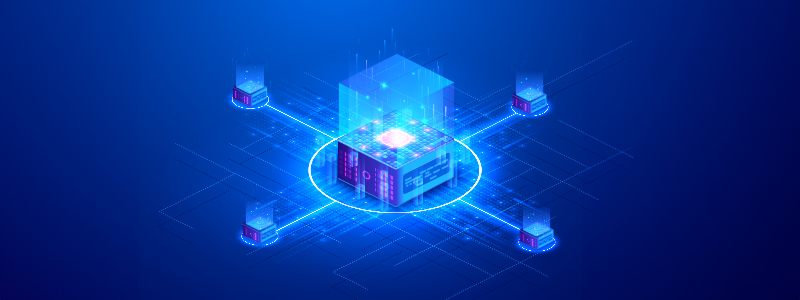
What Is Legacy ERP Modernization? Legacy vs. Modern ERP
Staying competitive requires embracing change and innovation. Modernizing legacy ERP is one such change that can equip enterprises with the tools they need to thrive. According to Gartner, 45% of CIOs seek to decrease investments in legacy infrastructure. Understanding this transition’s importance and navigating it can position businesses for sustained growth and success.
What Is a Legacy ERP System?
A Legacy ERP System is an older, outdated software platform organizations use to manage and integrate their core business processes. These systems typically include functions for managing inventory, accounting, human resources, customer relationship management (CRM), supply chain, and other business activities.
Key Characteristics of Legacy ERP Systems
- On-Premises Deployment: Legacy ERP systems are typically installed on physical servers within an organization’s data center. This arrangement means the organization maintains the hardware, software, and network infrastructure.
- Monolithic Architecture: These systems are often built with a monolithic architecture, meaning all modules and components are tightly integrated and interdependent. Modifying or upgrading one part of the system can be complex and risky.
- Customization: Over the years, legacy ERP systems are often heavily customized to meet specific business needs, making them rigid and difficult to upgrade or integrate with modern solutions.
- Limited Integration Capabilities: These systems can have difficulties integrating with newer software applications and technologies, leading to inefficiencies and data silos.
- Outdated Technology: Legacy ERPs are usually present on outdated technology stacks, such as older programming languages (e.g., COBOL), operating systems, and database management systems. Hence, they lack modern features like real-time data processing, user-friendly interfaces, and advanced security measures.
Shortcomings of Legacy ERP Systems
While legacy ERP systems have served businesses well, they come with several significant drawbacks that can impact growth and efficiency in the modern business environment:

High Maintenance Costs
Maintaining legacy ERP systems can be a significant financial burden. They often require substantial investment in hardware upkeep, software updates, and dedicated IT personnel. Over time, these costs can escalate, putting a financial strain on the company and reducing funds available for other critical areas of the business.
Additionally, the inability to integrate with new programs and leverage the latest innovations costs businesses significantly. The lost performance and productivity outweigh the perceived savings from delaying the implementation of a modern ERP system.
The inefficiencies inherent in these legacy systems often result in higher operational costs. These costs can include the need for specialized IT staff to maintain these systems and the costs associated with sourcing and installing outdated hardware components. The inability to upgrade hardware components can limit the system’s performance and scalability, hindering business growth and adaptation.

Lack of Scalability and Adaptability
As businesses grow, legacy ERP systems often struggle to keep pace. Their inflexible and monolithic nature makes it challenging and expensive to scale them to accommodate new processes or increased data volumes.
Older ERP systems cannot connect to the cloud and require installation on physical business systems. They can only be accessed by devices directly connected to them, severely limiting flexibility in work styles, such as remote work.
The lack of cloud connectivity in older ERP systems can hinder flexible work styles such as remote work. This can decrease productivity and increase operational costs. Moreover, the inability to scale operations or quickly adapt to changes in the business environment can put companies at a competitive disadvantage .
Poor User Experience
Legacy ERPs typically have outdated user interfaces, making them difficult to use. This results in longer training times for new employees and decreased productivity for existing users. An intuitive and efficient user interface is crucial for maximizing an ERP system’s value, and older systems often fall short.
Legacy ERPs typically have outdated user interfaces, making them difficult to use. The steep learning curve of these software can delay task completion, decrease work efficiency, and increase the likelihood of errors. This can push up operational costs and lower user satisfaction.
Incompatibility with New Innovations and Regulations
Another significant drawback of older ERP systems is their incompatibility with newer software and technologies that can enhance operations. This drawback includes adopting new software, integrating AI features, and receiving regular updates.
The difficulty in integrating newer technologies with legacy ERP systems can limit a business’s ability to leverage these technologies to streamline operations or gain new insights, hindering business growth and innovation. Moreover, the inability to quickly adapt to evolving industry trends can put companies at a competitive disadvantage.
Integration Challenges
Integrating legacy ERP systems with modern technologies, such as cloud applications or IoT devices, can be a significant challenge. This lack of compatibility limits businesses’ ability to take advantage of innovations and streamline their operations. Modernizing an ERP system’s integration capabilities is essential for maintaining operational efficiency and competitiveness.
The lack of interoperability in legacy ERP systems makes data sharing difficult. Businesses may need to manually transfer data between systems or duplicate efforts across different platforms. This can increase operational costs and lower efficiency. Moreover, the inability to quickly integrate new services can hinder business growth and innovation.
Data Silos
Legacy ERP systems can create data silos, where information is trapped within specific modules. This fragmentation makes it difficult to have a unified view of business operations. Organizations must eliminate data silos and ensure seamless data flow across the organization to save time and effort spent on maintaining several systems.
Data silos in legacy ERP systems can hinder a business’s ability to gain a holistic view of its operations or make informed decisions based on comprehensive data. Silos can result in lower efficiency and decreased competitiveness. The time and effort spent on maintaining several systems increases operational costs.
Security Risks
Older ERP systems may lack the robust security features essential to protect against modern cyber threats. Lack of security can cause data breaches and other security risks.
Legacy ERP systems lack advanced security measures, including regular updates and patches, robust access controls, encryption, security audits, and insider threat detection. Businesses need these features to maintain critical business data’s integrity, confidentiality, and availability.
What is a Modern ERP System?
A modern ERP system is designed to address the limitations of legacy ERP by leveraging the latest technologies. Modern technologies such as automated workflows, real-time data processing, advanced analytics, integration capabilities, and robust security and compliance features are essential to maintain competitive advantage.
Modern ERPs are a comprehensive, integrated suite of software applications designed to manage and streamline a company’s core business processes in real-time, often through a centralized database. These systems are typically cloud-based, modular, and highly integrated, offering greater flexibility and scalability to organizations. Modern ERP systems like SAP S/4HANA, Oracle ERP Cloud, and Microsoft Dynamics 365 are examples of Modern ERP platforms that provide comprehensive, up-to-date functionalities.
Key Characteristics of Modern ERP Systems
These systems have several distinct characteristics:
- Cloud Deployment: Modern ERPs are often hosted either completely or partially in the cloud. This means that businesses can reduce the need for on-premises infrastructure, which can be costly and difficult to maintain. Cloud deployment also allows for easier updates and maintenance, ensuring that the system is always up-to-date with the latest features and security measures.
- Modular Architecture: These systems use a modular approach, which means that businesses can choose to implement only the functionalities they need. This allows for greater flexibility and scalability, as businesses can add or remove modules as their needs change.
- Advanced Integration: Modern ERPs are designed to easily integrate with new technologies and third-party applications. This enhances overall business agility and allows businesses to leverage the latest technological advancements. In addition, modern ERPs integrate various business processes and functions into a single unified system, including Finance and Accounting, Human Resources (HR), Supply Chain Management, Customer Relationship Management (CRM), Manufacturing and Production, and Sales and Marketing. This integration provides a comprehensive view of the business and facilitates better decision-making.
- User-Friendly Interfaces: Modern ERPs feature intuitive interfaces that are easy to navigate. Many also offer mobile accessibility, allowing users to access the system from anywhere, at any time. This improves user experience and productivity, as users can perform tasks and access information on the go.
- Enhanced Analytics and Reporting: Modern ERPs offer powerful analytics tools that provide real-time insights into business operations. These tools allow businesses to track performance, identify trends, and make data-driven decisions. The reporting capabilities of modern ERPs also enable businesses to generate detailed reports with ease, facilitating compliance and strategic planning.
- Robust Security Features: Modern ERPs incorporate advanced security measures to protect sensitive business data from cyber threats. These measures can include data encryption, user authentication, access controls, and regular security audits. This ensures that business data is secure and that businesses can comply with data protection regulations.
What Benefits Does a Modern ERP System Promise?
Transitioning to a modern ERP system can yield numerous benefits for businesses, including:
Cost Efficiency
Modern ERP systems are typically hosted in the cloud, which eliminates the need for extensive on-premises hardware. This reduces the initial capital expenditure significantly.
Additionally, modern ERPs use a subscription-based model. Businesses pay for what they use and can scale costs according to their needs. Therefore, organizations enjoy the financial flexibility to scale operational expenses based on their requirements.
Cloud providers also handle system maintenance, updates, and security, which reduces the burden and cost of in-house IT management. This shift results in reduced upfront costs, predictable expenses, and a reduced IT burden, allowing internal teams to focus on strategic initiatives.

Source: McKinsey
Scalability
Legacy ERP systems often have limitations in scalability due to their fixed hardware and software capacities. This makes scaling up both costly and challenging. However, modern ERP systems, particularly those based in the cloud, offer elastic scalability.
For example, a retail business using a modern ERP can easily scale up its operations during the holiday season to handle increased sales and customer traffic, and then scale down once the season ends. This kind of scalability is cost-effective and efficient, allowing businesses to adapt to changes in demand.
The modular architecture of modern ERPs allows businesses to add new functionalities as they grow. For instance, a manufacturing company might start with modules for inventory management and sales, and later add modules for human resources or customer relationship management as the business expands. This ability to grow with the business without disrupting existing operations is a key benefit of modern ERPs.
Agility and Flexibility
Legacy ERPs are often rigid and inflexible, requiring significant customization to adapt to new business processes or market changes. These customizations can be costly and time-consuming. In contrast, modern ERPs are designed to be flexible and modular. For example, a logistics company using a modern ERP could quickly implement a new process to handle a new type of shipment or adjust its operations in response to new regulations.
Cloud-based ERPs can be deployed faster than on-premises systems, enabling businesses to respond quickly to market opportunities or changes. For instance, a startup could get its operations up and running much faster with a cloud-based ERP than with an on-premises system.
Modern ERPs also offer robust integration capabilities with other software and services, facilitating seamless data flow and process automation. This quick adaptation, reduced time to value, and enhanced innovation can help organizations maintain a competitive edge.
Improved Collaboration
Legacy ERPs often operate in silos, where different departments use separate systems that do not communicate effectively. Integration between these systems can be difficult, leading to fragmented data and communication breakdowns.
Modern ERPs feature enhanced integration capabilities, allowing seamless communication between different departments. They use a unified database that centralizes all information, making data accessible across the organization.
Additionally, integrated communication tools like messaging and shared dashboards help teams collaborate. Modern ERPs simplify access to real-time data, allowing teams to improve coordination and work together effectively.
Real-time Insights
Legacy ERPs typically provide limited analytics capabilities, often requiring manual data extraction and processing to generate reports. These reports are usually outdated by the time they are reviewed, forcing the organization to rely on outdated insights.
Modern ERPs include advanced analytics and reporting tools that process data in real-time. They can leverage artificial intelligence (AI) and machine learning (ML) to predict trends and identify patterns.
Modern ERPs also enable customizable dashboards to provide organizations key metrics and insights. These real-time insights enable informed decision-making and allow businesses to respond swiftly to changing conditions, ensuring proactive management.
Enhanced Customer Experience
Legacy ERP systems typically offer basic customer relationship management (CRM) functionalities, often as separate modules with limited integration with other parts of the ERP. Because customer data is fragmented, internal departments rely on inconsistent data which disrupts decision-making and communication.
Modern ERP systems integrate robust CRM functionalities directly within the system, ensuring seamless access to customer data across departments. Gaining access to historical data gives sales teams a complete picture of customer preferences, enabling them to have personalized interactions with leads.
Modern ERPs also support omnichannel interactions, allowing businesses to handle customer relationships across various platforms, such as email, social media, and phone. This improved customer service and satisfaction lead to better customer loyalty and retention.
Enhanced Mobile Accessibility
Legacy ERP systems often lack mobile capabilities or offer limited functionality on mobile devices. Accessing ERP systems outside the office can be challenging, leading to delays in decision-making and reduced productivity.
Modern ERPs are designed with mobility in mind, providing full functionality on smartphones, tablets, and other mobile devices. They allow employees to access the ERP system from anywhere, facilitating remote work and real-time updates. This enhanced productivity and responsiveness, coupled with greater flexibility in work arrangements, supports remote and hybrid work models, making modern ERP systems a valuable asset for today’s dynamic business environment.
Legacy ERP vs. Modern ERP
It’s helpful to compare legacy and modern ERP systems across several key dimensions to understand their distinctions.
Legacy ERP Modernization
Modernizing a legacy ERP system requires organizations to update or replace outdated software to meet current business needs and technological standards. This process includes various strategies, each offering unique advantages.
Phased Implementation
A phased transition to a modern ERP requires organizations to replace legacy components with modern modules gradually. This step-by-step approach reduces disruption and allows for a smoother transition, helping organizations manage risk and cost more effectively.
First, organizations must disconnect unnecessary connections. Legacy ERP systems often develop numerous connections to other applications over time. These connections can be categorized into necessary and unnecessary:
- Necessary Connections: These are essential for standard functions, like accounts payable, and follow the vendor’s architecture guidelines, making them easy to maintain. These should remain unchanged during modernization as they effectively perform their intended roles.
- Unnecessary Connections: Legacy ERP systems often accumulate various ad hoc and bespoke connections developed for convenience rather than following best practices. These connections add complexity and increase the risk of errors during modernization.
To manage the complexity of these connections, an API integration layer can be introduced between the core ERP system and its connected applications. This layer, accessible via APIs, decouples the myriad connections from the core system, allowing for modular upgrades without affecting all dependent applications.
The API integration layer facilitates system changes, such as implementing modular architecture facets, without disrupting existing connections. This layer can be developed within a year and does not need to be perfect initially; functionality is the primary goal.

Full Replacement
Full replacement involves completely replacing the legacy ERP system with a new, modern solution, providing comprehensive benefits and ensuring all aspects of the system are up-to-date.
Effective governance ensures the new API integration layer is utilized properly. Simplified access for product teams to core features without lengthy approval processes and enforcement mechanisms to ensure compliance with new protocols are essential.
Legacy ERP systems are often heavily customized, adding to their complexity. Modernization involves migrating these customizations to a new environment, typically a digital platform accessible through microservices. Creating a cloud-based digital platform for different functions (such as customer-facing, supply chain, ERP system) allows for better management and development of custom functions. Identifying and migrating essential customizations while removing obsolete ones simplifies the modernization process and reduces risk.
Hybrid Approach
The hybrid approach integrates modern cloud-based solutions with existing on-premises systems, balancing legacy investments with new technologies. After extracting customizations, the next step is to shrink the ERP core to its essential functionalities. This involves disaggregation, which means removing unnecessary connections and functionalities from the core ERP system. This makes it easier to upgrade or replace specific functions without affecting the entire system. Simplifying and cleaning up the code base enhances understanding and maintainability, facilitating future improvements.
Prioritizing upgrades is essential in this approach. ERP upgrades are complex but necessary due to increasing business pressures and the continuous rollout of new software and services by cloud and ERP providers. A product and platform approach can help prioritize upgrades that add value while minimizing risks. Focusing on upgrades that directly contribute to business value and managing the scope and complexity of the upgrades can help control costs and improve outcomes.
Cloud Migration
Cloud migration involves shifting from on-premises to cloud-based ERP solutions, significantly enhancing flexibility, scalability, and cost-efficiency. This method can be implemented in stages or as a complete system overhaul. Moving to the cloud allows ERP software developers to create new features in a flexible, scalable environment. This approach helps them develop features that fit user requirements more effectively.
Custom Development
Custom development involves creating bespoke solutions to modernize specific aspects of a legacy ERP system, addressing unique business requirements that off-the-shelf solutions cannot meet. White-box modernization is one approach that transforms the application architecture and technological stack without losing business value and quality attributes. This method ensures seamless integration and functionality while minimizing maintenance costs.
Each strategy offers a pathway to modernize legacy ERP systems effectively, enabling businesses to keep pace with technological advancements and improve operational efficiency.
By carefully selecting the right approach, companies can ensure a smoother transition and reap the benefits of modern ERP capabilities.
Enabling API-First Legacy ERP Modernization
While legacy systems have their place and may still suffice for some businesses, the benefits of modern ERP systems—ranging from cost efficiency to enhanced agility—are compelling. An API-first modernization strategy allows organizations to modernize their ERP cost-effectively with minimal disruption.
Astera’s API management platform is a powerful tool that facilitates this process through its comprehensive features and user-friendly design. Here’s how Astera supports API-first legacy ERP modernization:
- Code-free API Design and Implementation: Accelerate the modernization by making it code-free. Legacy ERP systems often require extensive custom coding for integrations. Empower business analysts and non-technical users to design and deploy APIs using a visual interface, reducing dependency on IT resources and accelerating the integration process.
- Auto-generated Database CRUD APIs: Simplify database management with automated creation of APIs for Create-Read-Update-Delete operations. Seamlessly integrate with new systems and applications and expedite data migration and synchronization.
- Auto-generate Test Flows: Ensure new integrations work currently without spending time on manual testing.
- Versioning and Maintenance: Modernizing an ERP system often involves multiple iterations and updates. Enjoy full control over versioning and roll out new API versions smoothly without disrupting existing operations.
- Auto-generated Swagger Documentation: Autogenerate clear and detailed API references that facilitate collaboration and reduce development time.
- Developer Portal: Enjoy a single point of access for API resources, enabling seamless collaboration and reuse of API products.
- Monitoring and Logging: Gain real-time insights and diagnostics into API health and performance, helping identify and resolve issues quickly.
- Enterprise-level Security and Compliance: Safeguard sensitive business data, protect API services from unauthorized access and comply with industry standards throughout the modernization process.
Astera provides a comprehensive suite of features that enable an API-first strategy, making it an ideal solution for legacy ERP modernization. Start a Free Trial Now – explore how Astera helps modernize ERP solutions within a few minutes.
 Astera AI Agent Builder - First Look Coming Soon!
Astera AI Agent Builder - First Look Coming Soon!


